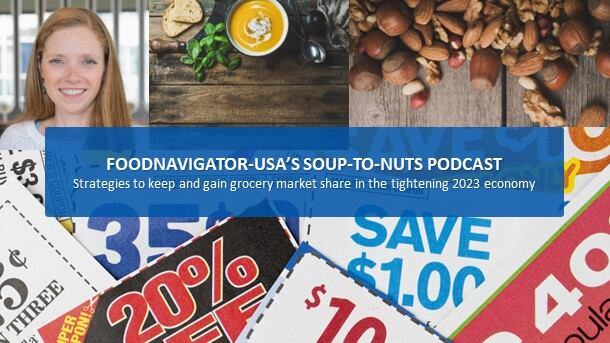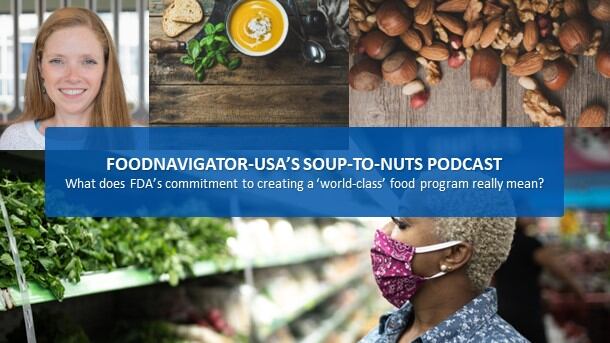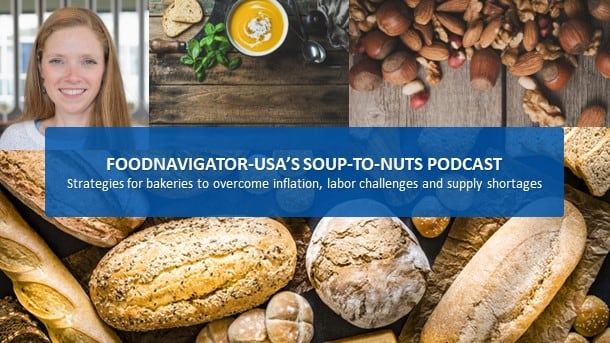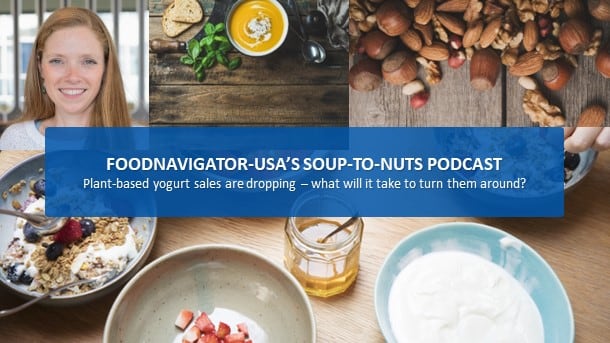As such, retailers and manufacturers will need to rethink how they reach out to and engage with shoppers, the types of products and services they offer and how they might best position themselves to meet evolving consumer needs and expectations.
In this episode of FoodNavigator-USA’s Soup-To-Nuts podcast, Julie Companey, director of client strategy, grocery drug mass channel at the media, marketing and coupon distributor Vericast shares how the tightening economy combined with ongoing concerns about the pandemic, geo-political strife and supply chain issues will influence consumers in 2023. She also shares strategies for how grocers and manufacturers can woo shoppers with effective marketing strategies that educate and inspire, promotions that drive trial and consumer acquisition and an omnichannel approach that meets consumer demand for convenience.
[Never miss an episode of FoodNavigator-USA’s Soup-To-Nuts Podcast – subscribe today.]
‘We’re at another tipping point with inflation coming into play’
For more than a year, consumer grocery spending held more or less steady despite wave after wave of price hikes across the board, but in recent quarters shoppers have begun to shift and in some cases pull back spending – albeit unevenly across demographics and less than expected.
Companey explains this trend will likely accelerate in the New Year as the desire to celebrate the holidays is a replaced by a desire to rebuild financial health, and hedge against the rising risk of a recession or layoffs.
“When you think about where grocery has been just in the last five years, the progression of change has been at the fastest pace that I’ve seen in my career. And while [the grocery industry] should be applauded for all the changes and the updates that they have been making to stores, their labor practices and so on, we’re at another tipping point with inflation coming into play,” Companey said, adding that price will likely be on the minds of most consumers for at least the next six months.
She explained that during the holidays many consumers were willing to splurge because they wanted to celebrate, but increasing consumers are making choices between what they need and want, with the later sometimes being deferred.
“People are getting very intentional with their spending as a result of the prices going up on so many different things,” she said.
The extent to which consumers are pulling back, trading down or adjusting their behavior in response to the economic environment depends on their current financial status – complicating the response of retailers and manufacturers.
“There is a definite bifurcation” with upper income consumers making few adjustments and middle and lower income consumers either trading down or out, she said.
This holds not just for products but also stores, she noted, explaining that middle and lower income consumers now shop at four or five different stores for groceries based on price and convenience with some middle income consumers going more regularly to retailers like Walmart and Dollar General, which have not historically attracted them.
As loyalty erodes, private label sales climb
In addition to shifting where they shop, consumers also increasing are switching up what they buy, as illustrated by a Vericast survey conducted in September that found 53% of respondents agreeing that they have become less loyal to specific brands.
As this loyalty erodes, Companey explains that products and retailers that offer the best price or the most convenience are winning.
Top among the winners is private label, which if positioned correctly can help retailers earn back consumer loyalty and drive foot traffic.
“Private brands, in my opinion, are really having their moment in the sun,” Companey said, noting research from FMI – The Food Industry Association that predicted private label sales for grocery could reach upwards of 25% this year.
As such, private labels are becoming a point of differentiation and sales driver with 52% of shoppers picking their retailer based on their store brand offerings.
To take full advantage of this trend, Companey says retailers need to make the connection between their store and their brands and promote private label the same way as manufacturers of named brands, which could include working with influencers and leveraging paid social media.
Personalize marketing to earn back loyalty
As private label gains market share, Companey says brand manufacturers will need to tailor their marketing efforts across banners, regions and demographic groups to focus on where they are most vulnerable and where they can potentially expand their base.
She explained that because retailers and private label penetration will vary across different banners and regions CPG brand managers will want to consider their marketing strategy at a national level and within individual retailers – investing more in areas where retailers are winning with private label.
An increasingly important lever on which manufacturers and brands alike will need to lean in the coming year will be personalized promotions based on shoppers’ habits and interests, which according to a Vericast survey 46% of respondents say they want to see more.
Companey advises a good place to focus personalization is on coupons and discounts, which more consumers are seeking currently.
“So what’s the smartest way to do that? I think most CPG brands are very familiar with how to target their particular consumer. They’re using a couple of different levers,” such as “how often do you buy my product? How often do you buy the category? How loyal are you to my brand within the category. And that usually influences the level of the offer that is delivered to the consumer,” she said.
She noted retailers often are not that “robust in terms of their digital offers,” but they can find traction in offering a discount for baskets of a certain size, such as $10 off for every $100 spent – a strategy that can often push consumers to buy more even in tight financial times.
Company also advises both retailers and manufacturers engage consumers through education and inspiration, with a special focus on how to make grocery dollars and meals stretch given the economic uncertainty that many people currently face.
For other insights on how grocers and manufacturers can continue to drive sales, capture new consumers and retain existing ones in the new year and throughout economically challenging periods, check out Vericast’s recently published report 14 Trends That Will Define Marketing in 2023, which is available at vericast.com under the insights tab, which includes additional research and advice, as well.




